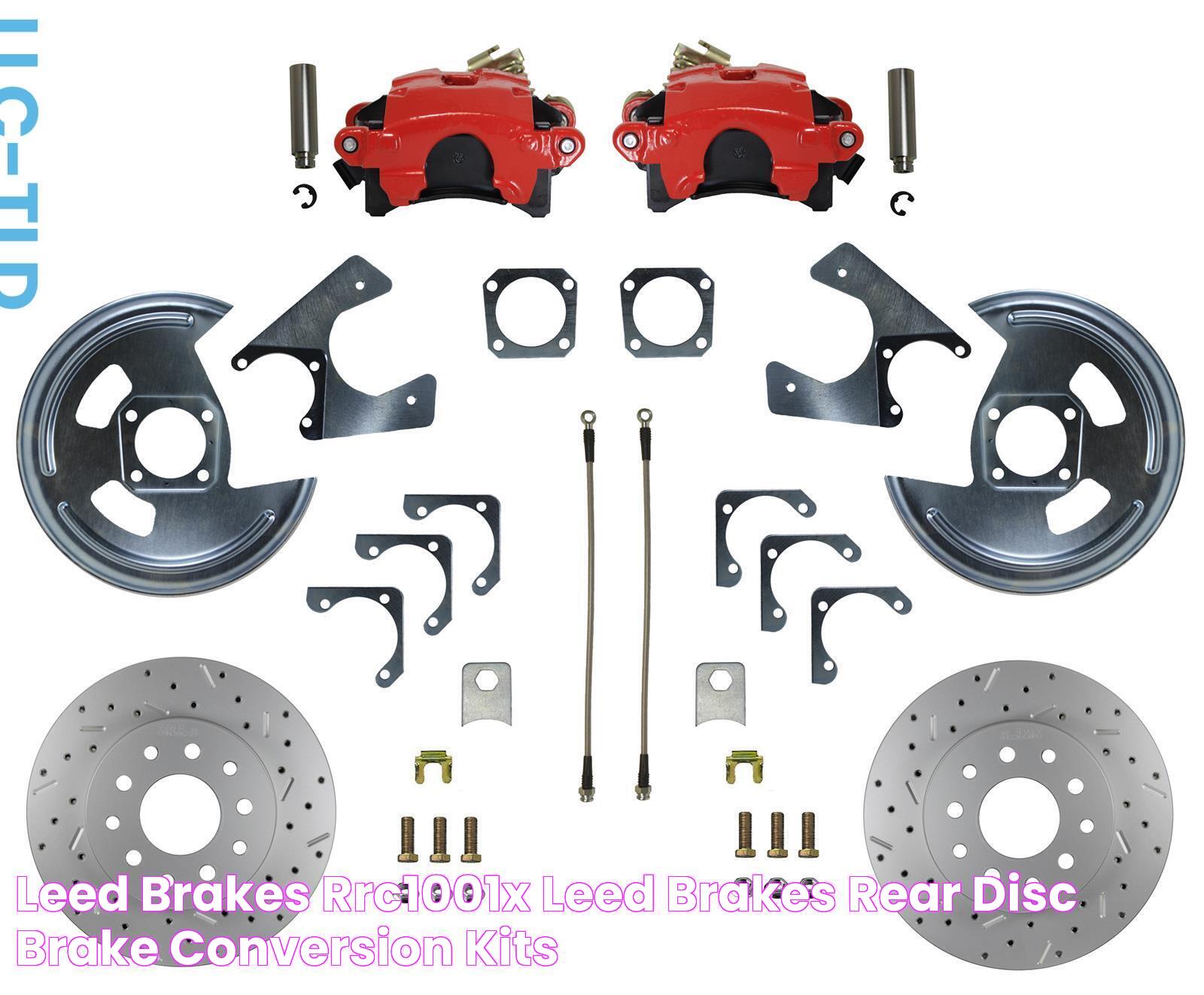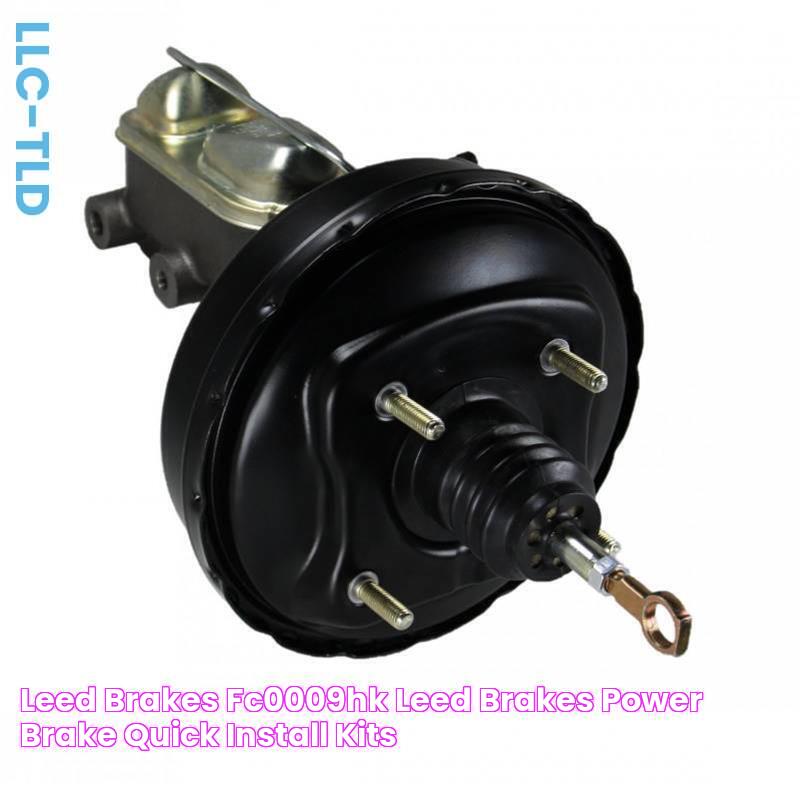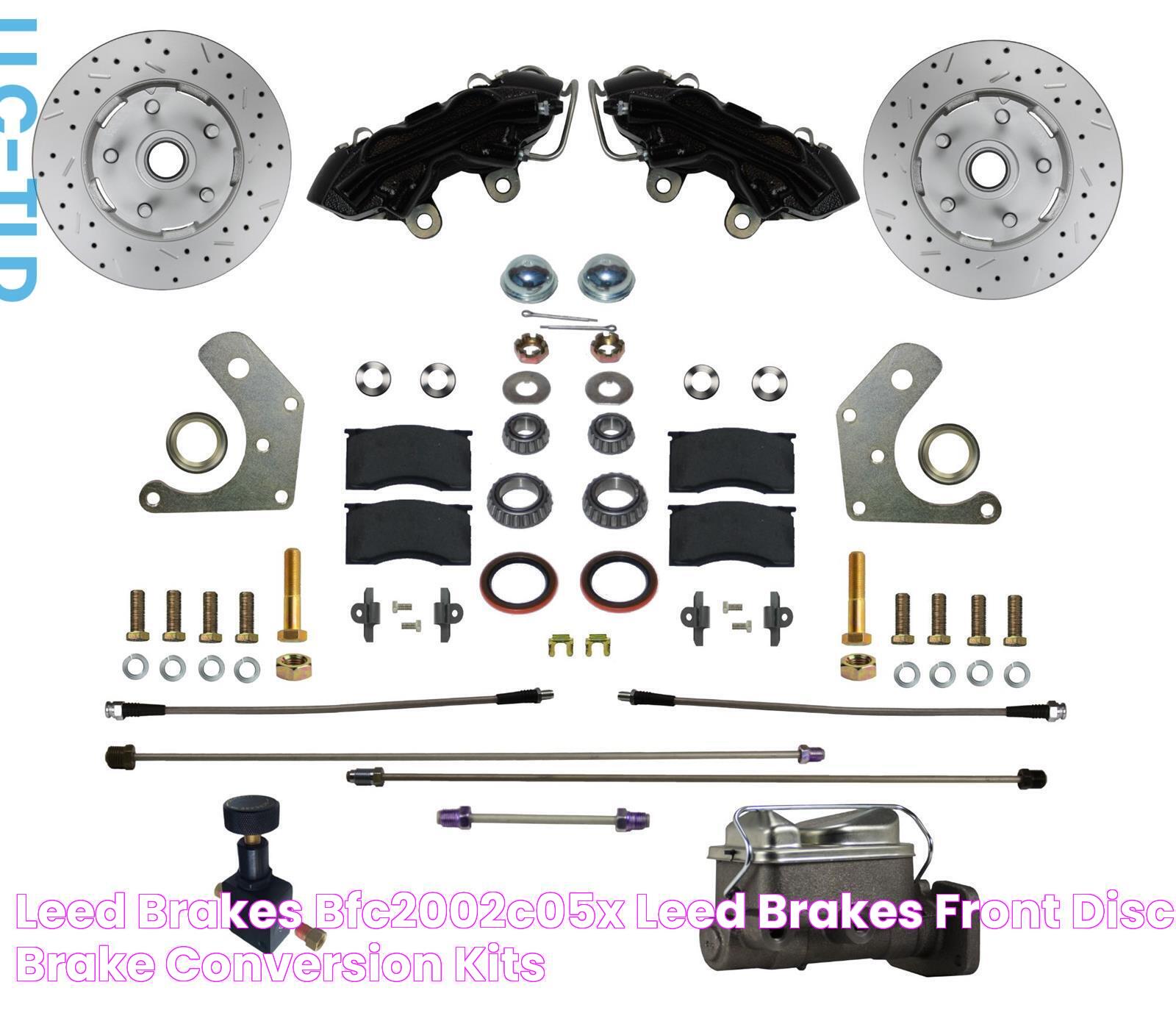The Ultimate Guide To LEED Brake Systems: Innovations For Green Building
A leed brake is a device used for crimping or bending sheet metal. It is typically used in the manufacture of metal components, such as brackets, enclosures, and chassis. Leed brakes come in a variety of sizes and capacities, and can be either manually operated or powered.
Leed brakes are an essential tool for metalworking, and offer a number of advantages over other methods of bending sheet metal. They are relatively inexpensive to purchase and operate, and can be used to create complex bends with high precision. Additionally, leed brakes are portable, making them ideal for use in a variety of settings.
The main components of a leed brake include a bed, a ram, and a die. The bed is the base of the machine, and the ram is the part that moves up and down to bend the metal. The die is the shape that the metal is bent into. Leed brakes can be used to create a wide variety of bends, including 90-degree bends, 180-degree bends, and more complex shapes.
Read also:Optimize Your Business With 9bids The Ultimate Digital Procurement Solution
leed brake
Leed brakes are essential tools for metalworking, and offer a number of advantages over other methods of bending sheet metal. They are:
- Inexpensive
- Portable
- Versatile
- Durable
- Easy to use
- Accurate
- Efficient
Leed brakes can be used to create a wide variety of bends, including 90-degree bends, 180-degree bends, and more complex shapes. They are used in a variety of industries, including automotive, aerospace, and construction. Leed brakes are an essential tool for any metalworking shop.
1. Inexpensive
Leed brakes are an inexpensive option for bending sheet metal, making them a great choice for small businesses and hobbyists. They are much cheaper than other types of bending machines, such as press brakes and CNC brakes. This makes them a great option for those who are on a budget.
- Low initial investment
Leed brakes are relatively inexpensive to purchase, making them a great option for those who are just starting out in metalworking.
- Low operating costs
Leed brakes are also inexpensive to operate. They do not require any special tools or materials, and they can be used with a variety of different types of sheet metal.
- Long lifespan
Leed brakes are built to last. They are made from durable materials and they can withstand heavy use. This makes them a great investment for any metalworking shop.
Read also:
- The Aweinspiring Return Beauty In Black Season 2
- Easy to maintain
Leed brakes are easy to maintain. They do not require any special maintenance procedures, and they can be repaired by most mechanics.
Overall, leed brakes are an inexpensive and versatile option for bending sheet metal. They are a great choice for small businesses, hobbyists, and anyone who is on a budget.
2. Portable
Leed brakes are portable, which means they can be easily moved from one location to another. This makes them ideal for use in a variety of settings, including construction sites, workshops, and even in the field. Portability is a key advantage of leed brakes over other types of bending machines, such as press brakes and CNC brakes, which are much larger and heavier.
There are many benefits to using a portable leed brake. For example, it can be used to quickly and easily bend sheet metal on site, eliminating the need to transport the metal to a workshop or factory. This can save time and money, and it can also help to reduce the risk of damage to the metal during transportation. Additionally, portable leed brakes can be used in remote locations where there is no access to electricity or other power sources.
Overall, the portability of leed brakes makes them a versatile and convenient option for bending sheet metal. They are ideal for use in a variety of settings, and they can help to save time and money.
3. Versatile
Leed brakes are versatile machines that can be used to create a wide variety of bends in sheet metal. This versatility is due to the fact that leed brakes can be used with a variety of different dies. Dies are the tools that shape the metal as it is bent. By using different dies, leed brakes can be used to create bends of different angles, shapes, and sizes.
The versatility of leed brakes makes them a valuable tool for a variety of metalworking applications. They can be used to create everything from simple bends to complex shapes. Leed brakes are also ideal for bending a variety of different types of sheet metal, including aluminum, steel, and stainless steel.
Here are some examples of the many ways that leed brakes can be used:
- Creating bends in sheet metal for roofing and siding
- Bending sheet metal for ductwork and ventilation systems
- Forming sheet metal for automotive and aerospace applications
- Creating decorative bends in sheet metal for furniture and other products
Overall, the versatility of leed brakes makes them a valuable tool for a variety of metalworking applications. They are a versatile and cost-effective way to create bends in sheet metal.
4. Durable
Leed brakes are incredibly durable machines that are built to last. They are made from high-quality materials and are designed to withstand heavy use. This durability is important because it ensures that leed brakes can provide years of reliable service.
There are many factors that contribute to the durability of leed brakes. First, they are typically made from heavy-duty steel or cast iron. These materials are strong and resistant to wear and tear. Second, leed brakes are often equipped with hardened steel dies. These dies are designed to withstand the high forces that are involved in bending sheet metal. Third, leed brakes are typically well-maintained. They are regularly lubricated and inspected, which helps to extend their lifespan.
The durability of leed brakes is important for several reasons. First, it ensures that leed brakes can provide years of reliable service. This can save businesses money in the long run, as they will not have to replace their leed brakes as often. Second, the durability of leed brakes makes them a good investment. Leed brakes are a relatively expensive piece of equipment, but they can last for many years if they are properly maintained.
5. Easy to use
Leed brakes are incredibly easy to use, making them a great choice for both beginners and experienced metalworkers. They are simple to set up and operate, and they do not require any special skills or training. This makes them a great option for those who are new to metalworking or who are looking for a simple and affordable way to bend sheet metal.
- Simple setup and operation
Leed brakes are very easy to set up and operate. They typically come with clear instructions that make it easy to get started. Once they are set up, they are very simple to use. Simply place the sheet metal on the bed of the machine, and then use the ram to bend the metal to the desired angle.
- No special skills or training required
Leed brakes do not require any special skills or training to operate. They are very simple to use, and even beginners can quickly learn how to use them safely and effectively.
- Great for beginners
Leed brakes are a great option for beginners who are new to metalworking. They are easy to use and can be used to create a variety of bends in sheet metal.
- Affordable
Leed brakes are a very affordable option for bending sheet metal. They are much less expensive than other types of bending machines, such as press brakes and CNC brakes.
Overall, leed brakes are a great option for those who are looking for an easy-to-use and affordable way to bend sheet metal.
6. Accurate
Accuracy is a critical aspect of leed brake operation. It ensures that the bends in the sheet metal are precise and consistent, which is essential for many metalworking applications. There are several factors that contribute to the accuracy of a leed brake, including:
- Die quality
The quality of the dies used in a leed brake has a significant impact on the accuracy of the bends. High-quality dies are made from durable materials and are precisely machined to ensure that they produce consistent bends. Dies that are worn or damaged can produce inaccurate bends.
- Machine alignment
The alignment of the leed brake also affects the accuracy of the bends. The ram and bed of the machine must be properly aligned in order to produce accurate bends. Misalignment can cause the sheet metal to bend unevenly or to produce bends that are not at the desired angle.
- Operator skill
The skill of the operator also plays a role in the accuracy of the bends. Experienced operators are able to produce more accurate bends than inexperienced operators. Operators should be properly trained on the operation of the leed brake and should be familiar with the materials being bent.
When all of these factors are taken into account, leed brakes can produce extremely accurate bends. This makes them a valuable tool for a variety of metalworking applications, including:
- Automotive
- Aerospace
- Construction
- Electronics
7. Efficient
Leed brakes are efficient machines that can quickly and easily bend sheet metal. This efficiency is due to a number of factors, including the machine's simple design, its ease of use, and its ability to produce accurate bends. As a result, leed brakes are a popular choice for a variety of metalworking applications, including:
- Automotive
- Aerospace
- Construction
- Electronics
One of the key factors that contributes to the efficiency of leed brakes is their simple design. Leed brakes are relatively simple machines, with few moving parts. This makes them easy to operate and maintain. Additionally, leed brakes are typically equipped with a variety of features that make them even more efficient, such as:
- Quick-release dies
- Adjustable ram speed
- Digital readouts
Another factor that contributes to the efficiency of leed brakes is their ease of use. Leed brakes are very easy to learn to operate. Even beginners can quickly learn how to produce accurate bends. Additionally, leed brakes are very forgiving machines. If a mistake is made, it is easy to correct it. This makes leed brakes a great choice for both experienced and inexperienced operators.
In conclusion, leed brakes are efficient machines that can quickly and easily bend sheet metal. Their simple design, ease of use, and ability to produce accurate bends make them a popular choice for a variety of metalworking applications.
Frequently Asked Questions about Leed Brakes
Leed brakes are a versatile and cost-effective way to bend sheet metal. They are used in a variety of industries, including automotive, aerospace, and construction. However, there are some common questions that people have about leed brakes. Here are the answers to some of the most frequently asked questions:
Question 1: What is a leed brake?
A leed brake is a machine that is used to bend sheet metal. It consists of a bed, a ram, and a die. The bed is the base of the machine, the ram is the part that moves up and down to bend the metal, and the die is the shape that the metal is bent into.
Question 2: What are the benefits of using a leed brake?
Leed brakes are a versatile and cost-effective way to bend sheet metal. They are easy to use, portable, and can be used to create a variety of bends. Additionally, leed brakes are durable and can withstand heavy use.
Question 3: What are the different types of leed brakes?
There are two main types of leed brakes: manual leed brakes and power leed brakes. Manual leed brakes are operated by hand, while power leed brakes are operated by a motor.
Question 4: What is the difference between a leed brake and a press brake?
Leed brakes and press brakes are both used to bend sheet metal. However, there are some key differences between the two machines. Leed brakes are typically smaller and less powerful than press brakes. Additionally, leed brakes are typically used for bending sheet metal that is thinner than 1/4 inch, while press brakes can be used for bending sheet metal that is up to 1 inch thick.
Question 5: How do I choose the right leed brake for my needs?
When choosing a leed brake, it is important to consider the following factors: the thickness of the sheet metal that you will be bending, the length of the bends that you need to make, and the frequency of use. If you are not sure which leed brake is right for you, it is best to consult with a qualified professional.
Question 6: How do I use a leed brake safely?
When using a leed brake, it is important to follow all safety precautions. This includes wearing safety glasses, gloves, and appropriate clothing. Additionally, it is important to make sure that the machine is properly grounded and that the dies are securely fastened. It is also important to keep your hands clear of the moving parts of the machine.
Overall, leed brakes are versatile and cost-effective machines that can be used to create a variety of bends in sheet metal. By following the safety precautions and choosing the right machine for your needs, you can ensure that you are using your leed brake safely and effectively.
If you have any further questions about leed brakes, please do not hesitate to contact a qualified professional.
Tips for Using Leed Brakes
Leed brakes are versatile and cost-effective machines that can be used to create a variety of bends in sheet metal. However, there are some important tips that you should follow to ensure that you are using your leed brake safely and effectively.
Tip 1: Always wear safety glasses and gloves when operating a leed brake. Sheet metal can be sharp, and it is important to protect your eyes and hands from injury.
Tip 2: Make sure that the leed brake is properly grounded. This will help to prevent electrical shock.
Tip 3: Securely fasten the dies to the leed brake. Loose dies can cause the sheet metal to bend unevenly or to become damaged.
Tip 4: Keep your hands clear of the moving parts of the leed brake. This includes the ram, the bed, and the dies.
Tip 5: Do not overload the leed brake. Bending sheet metal that is too thick or too long can damage the machine.
Tip 6: If you are not sure how to use a leed brake, consult with a qualified professional. Leed brakes can be dangerous machines if they are not used properly.
Tip 7: Regularly inspect the leed brake for any signs of damage. This includes checking the dies, the ram, and the bed. If you find any damage, do not use the machine until it has been repaired.
Tip 8: Keep the leed brake clean and lubricated. This will help to extend the life of the machine.
By following these tips, you can ensure that you are using your leed brake safely and effectively.
Leed brakes are a valuable tool for metalworking, but they can be dangerous if they are not used properly. By following these tips, you can help to prevent injuries and ensure that your leed brake lasts for many years to come.
Conclusion
Leed brakes are versatile and cost-effective machines that can be used to create a variety of bends in sheet metal. They are easy to use, portable, and durable, making them a popular choice for a variety of metalworking applications.
When using a leed brake, it is important to follow all safety precautions. This includes wearing safety glasses and gloves, making sure that the machine is properly grounded, and securely fastening the dies. It is also important to keep your hands clear of the moving parts of the machine and to not overload the machine.
By following these tips, you can ensure that you are using your leed brake safely and effectively. Leed brakes are a valuable tool for metalworking, and they can help you to create a variety of bends in sheet metal quickly and easily.
The Ultimate Guide To Love Island UK 2023: All The Drama, Love, And Heartbreak
Nicola Coughlan's Exciting Upcoming Projects
Excel Testing Solutions: Empowering Efficiency With Cutting-Edge Tools


